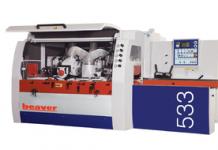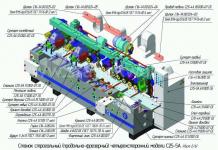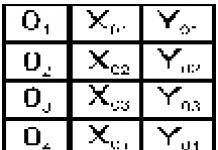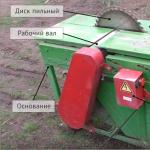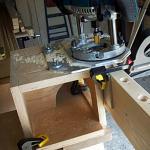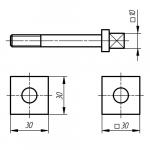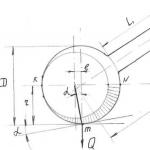Modern wars are distinguished by their swiftness and transience. Often the winners in military clashes are those who were the first to detect potential threats and react to them accordingly. For eight decades now, radar methods have been used for reconnaissance and recognition of the enemy at sea and on land, as well as in the air.
They are based on the emission of radio waves with the recording of their reflections from a wide variety of objects. Installations that send and receive such signals are modern radar stations or radars. The concept of “radar” comes from the English abbreviation – RADAR. It appeared in 1941 and has long been included in the languages of the world.
The advent of radar was a landmark event. In the modern world, it is practically impossible to do without radar stations. Aviation, navigation, hydrometeorological center, traffic police, etc. cannot do without them. Moreover, the radar complex is widely used in space technologies and in navigation systems.
Radar in military service
Still, the military liked radars most of all. Moreover, these technologies were originally created for military use and were practically implemented before the Second World War. All major states actively used radar to detect enemy ships and aircraft. Moreover, their use decided the outcome of many battles.
Today, new radar stations are used in a very wide range of military tasks. This includes tracking intercontinental ballistic missiles and artillery reconnaissance. All planes, helicopters, and warships have their own radar. Radars are generally the basis of air defense systems.

How do radars work?
Location is the definition of where something is. Thus, radar is the detection of objects or objects in space using radio waves that are emitted and received by a radar or radar. The principle of operation of primary or passive radars is based on the transmission into space of radio waves reflected from objects and returned to them in the form of reflected signals. After their analysis, radars detect objects at certain points in space, their main characteristics in the form of speed, height and size. All radars are complex radio engineering devices made up of many elements.
Modern radar complex
Any radar consists of three main elements:
- Signal transmitters;
- Antenna;
- Receivers.
Of all radar stations, there is a special division into two large groups:
- Pulse;
- Continuous action.
Pulse radar transmitters emit electromagnetic waves for short periods of time (fractions of seconds). The next signals are sent only when the first pulses return and hit the receivers. Pulse repetition rates are also important characteristics. So low-frequency radars send more than one hundred pulses within a minute.
Pulse radar antennas work as receivers and transmitters. As soon as the signals are gone, the transmitters turn off for a while and the receivers turn on. Following their reception, reverse processes occur.

Pulse radars have their disadvantages and advantages. They can determine the range of several targets simultaneously. Such radars may have one antenna each, and their indicators are very simple.
However, the emitted signals must have high power. All modern tracking radars have a pulse circuit. Pulse radar stations usually use magnetrons or traveling wave tubes as signal sources.
Pulse radar systems
Radar antennas focus and direct electromagnetic signals, and also pick up reflected pulses and transmit them to receivers. In some radars, signals can be received and transmitted using different antennas located at large distances from one another. Radar antennas can emit electromagnetic waves in a circle or operate in certain sectors.
Radar beams can be directed spirally or have the shape of cones. If necessary, radars can track moving targets and point antennas at them all the time using special systems. Receivers process the received data and transmit it to the operators’ screens.

One of the main disadvantages in the operation of pulse radars is interference coming from real objects, from the earth's surface, mountains, and hills. Thus, on-board pulse radars during their operation in aircraft will receive shadows from signals reflected by the earth's surface. Ground-based or shipborne radar systems detect these problems by detecting targets that fly at low altitudes. To eliminate such interference, the Doppler effect is used.
Continuous Range Radars
Continuous-wave radars operate by continuously emitting electromagnetic waves and use the Doppler effect. Its principle is that the frequencies of electromagnetic waves reflected from objects approaching signal sources will be higher than from objects moving away. In this case, the frequencies of the emitted pulses remain unchanged. Such radars do not detect stationary objects; their receivers only detect waves with frequencies higher or lower than those emitted.
The main disadvantage of continuous-wave radars is their inability to determine distances to objects. However, their operation does not cause interference from stationary objects between or behind the radars and targets. Also, Doppler radars have a relatively simple device that can operate using low-power signals. In addition, modern continuous-wave radar stations have the ability to determine distances to objects. To do this, changes in radar frequencies are used during their operation.

We also know about the so-called secondary radars used in aviation to identify aircraft. Such radar systems also have aircraft transponders. During the irradiation of aircraft with electromagnetic signals, the transponders provide additional data, such as altitude, route, aircraft number, and nationality.
Types of radar stations
Radars can be separated by the length and frequency of the waves on which they operate. In particular, when examining the earth's surface and when working at long distances, waves of 0.9-6 m and 0.3-1 m are used. In air traffic control, radars with a wavelength of 7.5-15 cm are used, and in over-the-horizon radars At stations for detecting missile launches, 10-100-meter waves are used.
From the history of radar development
The idea of using radar arose after the discovery of radio waves. So, in 1905, Siemens employee Christian Hülsmeyer created a device that could detect the presence of large metal objects using radio waves. The inventor proposed installing such devices on ships to avoid collisions, for example, in fog. However, shipping companies have not expressed interest in the new device.
Radar studies were also carried out on Russian territory. Thus, back at the end of the 19th century, the Russian scientist Popov discovered that the presence of metal objects prevents the propagation of radio waves.

In the early twenties, American engineers Albert Taylor and Leo Young discovered a passing ship using radio waves. However, due to the fact that the radio engineering industry of that time was undeveloped, it was not possible to create radar stations on an industrial scale.
The production of the first radar stations, with the help of which practical problems could be solved, began in England in the 30s. This equipment was extremely bulky and could be installed either on the ground or on large ships. It was only in 1937 that the first miniature radar was created that could be installed on airplanes. As a result, before World War II, the British had an extensive network of radar stations called Chain Home.
Cold War radars
During the Cold War, a new type of destructive weapon emerged in the United States and the Soviet Union. Of course, this was the advent of intercontinental ballistic missiles. Timely detection of launches of such missiles was vital.
Soviet scientist Nikolai Kabanov proposed the idea of using short radio waves to detect enemy aircraft at significant distances (up to 3000 km). Everything was quite simple. The scientist was able to discover that 10-100-meter radio waves tend to be reflected from the ionosphere.

Thus, when targets on the earth's surface are irradiated, they also return back to the radars. Later, based on this idea, scientists were able to develop radars with over-the-horizon detection of ballistic missile launches. An example of such installations can be “Daryal” - a radar station. For decades it was at the heart of Soviet systems for preventing missile launches.
Today, the most promising direction in the development of radar systems is considered to be the creation of radar stations with phased array antennas (PAA). Such devices have not one, but hundreds of radio wave emitters. All their functioning is controlled by powerful computers. Radio waves emitted from different sources in a phased array can amplify one another, or vice versa, when they are in phase or attenuated.
Phased array radar signals can be given any desired shape. They can move in space without changes in the positions of the antennas themselves, and also operate at different radiation frequencies. Phased array radars are considered more reliable and sensitive than similar devices with conventional antennas.
However, such radars also have disadvantages. The biggest problems with phased array radars are their cooling systems. Moreover, such radar installations are extremely complex to manufacture and are also very expensive.

Radar complexes with phased arrays
What is known about new phased array radars is that they are already being installed on fifth-generation fighters. Such technologies are used in American early warning systems for missile attacks. Radar systems with phased arrays are supposed to be installed on the Armata, the latest Russian-made tanks. Many experts note that the Russian Federation is among the world leaders that are successfully developing radar stations with phased arrays.
The radar consists of the following main elements:
Transmitting device;
Receiver;
Antenna switch and antenna device;
Terminal device;
Synchronizer.
The block diagram of the radar is shown in Fig. 5.2.

Fig.5.2 Block diagram of a radar station.
Transmitting device The radar is designed to generate a sounding signal and transmit it to the antenna.
Receiver The radar is designed to pre-process the reflected signal received by the antenna. It separates the useful signal from a mixture of signal and interference, converts the radio signal into a video signal and transmits it to the terminal device.
Antenna switch designed to connect the transmitter to the antenna when emitting a probing signal and connecting the receiver to the antenna when receiving the reflected signal.
End device to analyze the useful signal. The type of terminal device depends on the type of signal (analog or digital), the recipient of the radar information (operator, automatic position determination device, computer, etc.) and the type of radar information.
Synchronizer provides a given sequence of operation of the radar elements. For example, in the most common radars with a pulsed operating mode, the synchronizer performs the following functions:
Coordination of the moment of formation of the probing pulse with the moment of starting the time base of the indicator or the zero count of the computing device;
Coordination of the position of the antenna radiation pattern in space with the sweep of the indicator or zero reading of the computing device;
Determining the moment of opening the receiver and the interval of its operation.
In this case, the following synchronization methods are fundamentally possible:
1. Synchronization from the transmitter to the terminal device.
In such radars, the moment of formation of the probing pulse determines the moment of starting the time sweep of the indicator or the moment of zeroing the computing device. The advantage of this synchronization method is that the instability of the repetition rate of the transmitter probing pulses does not affect the accuracy of radar measurements. However, such radars are characterized by instability in the launch of the terminal device, which is difficult to completely eliminate.
2. Synchronization from the terminal device to the transmitter.
In this case, the operation of the terminal and transmitting device is controlled by a highly stable generator included in the terminal device. Thanks to this, high accuracy of radar measurements is achieved. However, problems arise when changing the repetition rate of the probing pulses.
3. Synchronization using a separate highly stable quartz oscillator, which is not part of the transmitting or terminal device.
This synchronization method is used in most modern radars, which usually provide the ability to change the repetition rate of probing pulses during station operation. This is necessary to ensure the radar's noise immunity when operating in conditions of passive or active radar interference.
The block diagram of a radar mainly depends on its purpose, the type of probing signal (pulse or continuous) and the modulated parameter of the radio signal.
However, in the general case, the procedure for processing a radio signal in a radar must be consistent not only with the type of sounding signal, but also with the type of interference. Therefore, the radar block diagram must take into account sources of active and passive electronic interference.
This task complicates the operation of any radar, because interference causes distortion of the signal reflected from the target and leads to the loss of useful radar information. Therefore, in the process of processing the reflected signal, they strive to suppress interference, which is achieved by introducing electronic interference protection devices into the radar block diagram.
The operating principle of a pulse radar can be understood by considering the “Simplified block diagram of a pulse radar (Fig. 3.1, slide 20, 25 ) and graphs explaining the operation of a pulse radar (Fig. 3.2, slide 21, 26 ).
It is best to start considering the operation of a pulse radar from the synchronization unit (launch unit) of the station. This block sets the “rhythm” of the station’s operation: it sets the frequency of repetition of the sounding signals, synchronizes the operation of the indicator device with the operation of the station’s transmitter. The synchronizer produces short-term sharp pulses AND zap with a certain repetition frequency T P. Structurally, the synchronizer can be made in the form of a separate block or be a single unit with the station modulator.
Modulator controls the operation of the microwave generator, turns it on and off. The modulator is triggered by synchronizer pulses and generates powerful rectangular pulses of the required amplitude U m and duration τ And. The microwave generator is switched on only in the presence of modulator pulses. The switching frequency of the microwave generator, and, consequently, the repetition rate of the probing pulses is determined by the frequency of the synchronizer pulses T P. The duration of operation of the microwave generator each time it is turned on (that is, the duration of the probing pulse) depends on the duration of the pulse forming in the modulator τ And. Modulator pulse duration τ And usually amounts to units of microseconds, and the pauses between them are hundreds and thousands of microseconds.
Under the influence of the modulator voltage, the microwave generator generates powerful radio pulses U gene, the duration and shape of which is determined by the duration and shape of the modulator pulses. High frequency oscillations, that is, probing pulses from the microwave generator, enter the antenna through the antenna switch. The oscillation frequency of radio pulses is determined by the parameters of the microwave generator.
Antenna switch (AP) provides the ability to operate the transmitter and receiver on one common antenna. During the generation of the probing pulse (μs), he connects the antenna to the output of the transmitter and blocks the input of the receiver, and for the rest of the time (the pause time is hundreds, thousands of μs) he connects the antenna to the input of the receiver and disconnects it from the transmitter. In pulse radar, automatic high-speed switches are used as antenna switches.
The antenna converts microwave oscillations into electromagnetic energy (radio waves) and focuses it into a narrow beam. The signals reflected from the target are received by the antenna, pass through the antenna switch and arrive at the receiver input U With, where they are selected, amplified, detected and supplied to indicator devices through anti-interference equipment.
The anti-jamming equipment is turned on only if there is passive and active interference in the radar coverage area. This equipment will be studied in detail in topic 7.
The indicator device is the terminal device of the radar and is used to display and retrieve radar information. The electrical circuit and design of indicator devices is determined by the practical purpose of the station and can be quite different. For example, for detection radars, using indicator devices, the air situation must be reproduced and the coordinates of targets D and β must be determined. These indicators are called 360-degree indicators (PVIs). Target altitude measuring radars (altimeters) use altitude indicators. Range indicators measure only the distance to the target and are used for control.
To accurately determine the range, it is necessary to measure the time interval t h(tens and hundreds of microseconds) with high accuracy, that is, devices with very low inertia are required. Therefore, range indicators use cathode ray tubes (CRTs) as measuring instruments.
Note. The principle of range measurement was studied in Lesson 1, therefore, when studying this issue, the main attention should be paid to the formation of a sweep on the PPI.
The essence of range measurement (delay time t h) using a CRT can be explained using the example of using a linear scan in a tube with electrostatic control of the electron beam.
During linear scanning in a CRT, the electron beam is influenced by the scanning voltage U R periodically moves at a constant speed in a straight line from left to right (Fig. 1.7, slide 9, 12 ). The sweep voltage is generated by a special sweep generator, which is triggered by the same synchronizer pulse as the transmitter modulator. Therefore, the movement of the beam across the screen begins every time the probe pulse is sent.
When using a target amplitude mark, the reflected signal coming from the receiver output causes the beam to deflect in a perpendicular direction. Thus, the reflected signal can be seen on the tube screen. The further away the target is, the more time passes before the reflected pulse appears and the farther to the right the beam has time to move along the scan line. Obviously, each point on the scan line corresponds to a certain moment of arrival of the reflected signal and, therefore, a certain range value.
Radars operating in all-round viewing mode use all-round viewing indicators (PVI) and CRTs with electromagnetic beam deflection and a brightness mark. The radar antenna with a narrow beam (BP) is moved by the antenna rotation mechanism in the horizontal plane and “views” the surrounding space (Fig. 3.3, slide,
On the PPI, the range sweep line rotates in azimuth synchronously with the antenna, and the beginning of the motion of the electron beam from the center of the tube in the radial direction coincides with the moment of emission of the probing pulse. Synchronous rotation of the sweep on the PPI with the radar antenna is carried out using a power synchronous drive (SSD). Response signals are displayed on the indicator screen in the form of a brightness mark.
PPI allows you to simultaneously determine the range D and azimuth β goals. For ease of reference, scale range marks in the form of circles and scale azimuth marks in the form of bright radial lines are electronically applied on the PPI screen (Fig. 3.3, slide, 8, 27 ).

Note. Using a television set and a TV card, invite students to determine the coordinates of the targets. Specify the scale of the indicator: range marks follow after 10 km, azimuth marks – after 10 degrees.
CONCLUSION
(slide 28)
Determining the distance to an object using the pulse method comes down to measuring the delay time t h reflected signal relative to the probing pulse. The moment of emission of the probing pulse is taken as the beginning of the countdown of the time of propagation of radio waves.
Advantages of pulse radars:
convenience of visual observation of all targets irradiated by the antenna simultaneously in the form of marks on the indicator screen;
alternate operation of the transmitter and receiver allows the use of one common antenna for transmission and reception.
Second study question.
Key indicators of the impulse method
The main indicators of the impulse method are (slide 29) :
Unambiguously determined maximum range, D;
range resolution, δD;
minimum detectable range, D min .
Let's look at these indicators.
Unambiguous maximum range
The maximum range of a radar is determined by the basic radar formula and depends on the parameters of the radar.
The unambiguity of determining the distance to an object depends on the repetition period of the probing pulses T P. Further, this question will be stated as follows.
The maximum range of the radar is 300 km. Determine the delay time to a target located at this range
The repetition period of the probing pulses was chosen to be 1000 μs. Determine the range to the target, the delay time to which is equal to T P
There are two targets in the airspace: target No. 1 at a range of 100 km and target No. 2 at a range of 200 km. What will the marks from these targets look like on the radar indicator (Fig. 3.4, slide 22, 30 ).

When probing space with pulses with a repetition period of 1000 μs, the mark from target No. 1 will be displayed at a distance of 50 km, since after a range of 150 km a new sweep period will begin and the distant target will give a mark at the beginning of the scale (at a distance of 50 km). The calculated range does not correspond to the actual one.
How to eliminate ambiguity in determining range?
After summarizing the students' answers, draw the following conclusion:
To unambiguously determine the range, it is necessary to select the repetition period of the probing pulses in accordance with the specified maximum range of the radar, that is
For a given range of 300 km, the repetition period of the probing pulses must be greater than 2000 μs or the repetition frequency must be less than 500 Hz.
![]()
In addition, the maximum detectable range depends on the width of the beam, the speed of rotation of the antenna and the required number of pulses reflected from the target per rotation of the antenna.
Range resolution (δD) is the minimum distance between two targets located at the same azimuth and elevation angle at which the signals reflected from them are observed separately on the indicator screen(Fig. 3.5, slide 23, 31, 32 ).


For a given duration of the probing pulse τ And and distance between targets ∆D 1 targets No. 1 and No. 2 are irradiated separately. With the same pulse duration, but at a distance between targets ∆D 2 targets No. 3 and No. 4 are irradiated simultaneously. Consequently, in the first case, the PPIs will be visible separately on the screen, and in the second, together. It follows that for separate reception of pulse signals it is necessary that the time interval between the moments of their reception be greater than the pulse duration τ And (∆ t > τ And )
![]()
Minimum difference (D 2 – D 1 ), in which targets are visible on the screen separately, by definition there is range resolution δD, hence
![]()
In addition to the pulse duration τ And The range resolution of the station is influenced by the resolution of the indicator, determined by the scan scale and the minimum diameter of the luminous spot on the CRT screen ( d P ≈ 1 mm). The larger the range sweep scale and the better the focusing of the CRT beam, the better the resolution of the indicator.
In general, the range resolution of the radar is equal to
Where δD And– indicator resolution.
The less δD , the better the resolution. Typically, the range resolution of a radar is δD= (0.5...5) km.
In contrast to range resolution, resolution in angular coordinates (azimuth δβ and elevation δε ) Not depends from the radar method and is determined by the width of the antenna radiation pattern in the corresponding plane, which is usually measured at half power level.
Radar azimuth resolution δβ O is equal to:
δβ O = φ 0.5r O + δβ And O ,
Where φ 0.5r O– width of the radiation pattern at half power in the horizontal plane;
δβ And O- azimuth resolution of indicator equipment.
The high resolution capabilities of the radar make it possible to separately observe and determine the coordinates of closely located targets.
The minimum detectable range is the shortest distance at which the station can still detect the target. Sometimes the space around the station in which targets are not detected is called a “dead” zone ( slide 33 ).

The use of one antenna in a pulse radar for transmitting probing pulses and receiving reflected signals requires turning off the receiver for the duration of the emission of the probing pulse τ u. Therefore, reflected signals arriving at a station when its receiver is not connected to the antenna will not be received and registered on the indicators. The length of time during which the receiver cannot receive reflected signals is determined by the duration of the probing pulse τ u and the time required to switch the antenna from transmitting to receiving after exposure to a transmitter probing pulse t V .
Knowing this time, the value of the minimum range D min pulse radar can be determined by the formula
Where τ u- duration of the radar probe pulse;
t V- the time the receiver is turned on after the end of the transmitter probing pulse (units - μs).
For example. At τ u= 10µs D min = 1500 m
at τ u= 1 µs D min = 150 m.
It should be borne in mind that an increase in the radius of the “dead” zone D min results from the presence on the screen of an indicator reflected from local objects and the limited range of rotation of the antenna in elevation.
CONCLUSION
The pulse radar method is effective in measuring the ranges of objects located at long distances.
Third study question
Continuous Radiation Method
Along with the use of the pulsed radar method, it can be carried out using installations with continuous energy radiation. With the continuous radiation method, it is possible to send more energy towards the target.
Along with the advantage of the energy order, the continuous radiation method is inferior to the pulsed method in a number of indicators. Depending on which parameter of the reflected signal serves as the basis for measuring the range to the target, the continuous radar method distinguishes:
phase (phasometric) radar method;
frequency radar method.
Combined radar methods are also possible, in particular, pulse-phase and pulse-frequency.
With the phase method In radar, the distance to the target is judged by the difference in the phases of the emitted and received reflected oscillations. The first phase-metric methods for measuring distance were proposed and developed by academicians L.I. Mandelstam and N.D. Papaleksi. These methods have found application in long-wave long-range aviation radio navigation systems.
With the frequency method In radar, the distance to the target is judged by the frequency of the beats between the direct and reflected signals.
Note. Students study these methods independently. Literature: Slutsky V.Z. Pulse technology and fundamentals of radar. pp. 227-236.
CONCLUSION
Determining the distance to an object using the pulse method comes down to changing the delay time tres of the reflected signal relative to the probing pulse.
To unambiguously determine the distance to an object, it is necessary that t zap.max ≤ T p.
The range resolution δD is better, the shorter the duration of the probing pulse τ u.
Radar station(radar) or radar(English) radar from Radio Detection and Ranging- radio detection and ranging) - a system for detecting air, sea and ground objects, as well as for determining their range and geometric parameters. Uses a method based on the emission of radio waves and recording their reflections from objects. The English acronym term appeared in the city; subsequently, in its writing, capital letters were replaced by lowercase ones.
Story
On January 3, 1934, an experiment was successfully carried out in the USSR to detect an aircraft using the radar method. An aircraft flying at an altitude of 150 meters was detected at a distance of 600 meters from the radar installation. The experiment was organized by representatives of the Leningrad Institute of Electrical Engineering and the Central Radio Laboratory. In 1934, Marshal Tukhachevsky wrote in a letter to the USSR government: “Experiments in detecting aircraft using an electromagnetic beam confirmed the correctness of the underlying principle.” The first experimental installation "Rapid" was tested in the same year; in 1936, the Soviet centimeter radar station "Storm" detected the aircraft from a distance of 10 kilometers. In the United States, the first military contract with industry was concluded in 1939. In 1946, American experts Raymond and Hacherton, a former employee of the US Embassy in Moscow, wrote: “Soviet scientists successfully developed the theory of radar several years before radar was invented in England.”
Radar classification
By purpose, radar stations can be classified as follows:
- detection radar;
- Control and tracking radar;
- Panoramic radars;
- Side-view radar;
- Meteorological radars.
Depending on the scope of application, military and civilian radars are distinguished.
By the nature of the carrier:
- Ground radars
- Naval radars
- Airborne radars
By type of action
- Primary or passive
- Secondary or active
- Combined
By wave range:
- Meter
- Centimeter
- Millimeter
Design and principle of operation of the Primary Radar
Primary (passive) radar mainly serves to detect targets by illuminating them with an electromagnetic wave and then receiving the reflections (echoes) of this wave from the target. Since the speed of electromagnetic waves is constant (the speed of light), it becomes possible to determine the distance to the target based on measuring the propagation time of the signal.
A radar station is based on three components: transmitter, antenna and receiver.
Transmitting device is a source of high power electromagnetic signal. It can be a powerful pulse generator. For pulsed centimeter range radars, it is usually a magnetron or pulse generator operating according to the following scheme: a master oscillator is a powerful amplifier, most often using a traveling wave lamp as a generator, and for meter range radars, a triode lamp is often used. Depending on the design, the transmitter operates either in pulse mode, generating repeating short powerful electromagnetic pulses, or emits a continuous electromagnetic signal.
Antenna performs focusing of the receiver signal and formation of a radiation pattern, as well as receiving the signal reflected from the target and transmitting this signal to the receiver. Depending on the implementation, the reflected signal can be received either by the same antenna or by another, which can sometimes be located at a considerable distance from the transmitting device. If transmission and reception are combined in one antenna, these two actions are performed alternately, and to prevent the powerful signal leaking from the transmitting transmitter to the receiver from blinding the receiver of a weak echo, a special device is placed in front of the receiver that closes the receiver input at the moment of emission of the probing signal.
Receiver Performs amplification and processing of the received signal. In the simplest case, the resulting signal is fed to a beam tube (screen), which displays an image synchronized with the movement of the antenna.
Coherent radars
The coherent radar method is based on isolating and analyzing the phase difference between the sent and reflected signals, which arises due to the Doppler effect when the signal is reflected from a moving object. In this case, the transmitting device can operate both continuously and in pulse mode. The main advantage of this method is that it “allows you to observe only moving objects, and this eliminates interference from stationary objects located between the receiving equipment and the target or behind it.”
Pulse radars
Operating principle of pulse radar

The principle of determining the distance to an object using pulse radar
Modern tracking radars are built as pulse radars. Pulse radar transmits only for a very short time, the short pulse is usually about a microsecond in duration, after which it listens for an echo while the pulse propagates.
Because the pulse travels away from the radar at a constant speed, the time elapsed from the time the pulse is sent to the time the echo is received is a clear measure of the direct distance to the target. The next pulse can be sent only after some time, namely after the pulse comes back, it depends on the detection range of the radar (given transmitter power, antenna gain and receiver sensitivity). If the pulse were sent earlier, the echo of the previous pulse from a distant target could be confused with the echo of a second pulse from a close target.
The time interval between pulses is called pulse repetition interval, its reciprocal is an important parameter called pulse repetition rate(CPI) . Low-frequency, long-range radars typically have a repetition interval of several hundred pulses per second (or Hertz [Hz]). The pulse repetition rate is one of the distinctive features by which remote determination of the radar model is possible.
Removing Passive Interference
One of the main problems of pulse radars is getting rid of the signal reflected from stationary objects: the earth's surface, high hills, etc. If, for example, an airplane is located against the backdrop of a high hill, the reflected signal from this hill will completely block the signal from the airplane. For ground-based radars, this problem manifests itself when working with low-flying objects. For airborne pulse radars, it is expressed in the fact that reflection from the earth's surface obscures all objects lying below the aircraft with the radar.
Methods for eliminating interference use, one way or another, the Doppler effect (the frequency of a wave reflected from an approaching object increases, and from a departing object it decreases).
The simplest radar that can detect a target in interference is radar with moving target selection(PDS) - a pulse radar that compares reflections from more than two or more pulse repetition intervals. Any target that moves relative to the radar produces a change in the signal parameter (stage in the serial SDC), while the interference remains unchanged. Elimination of interference occurs by subtracting reflections from two consecutive intervals. In practice, noise elimination can be carried out in special devices - through-period compensators or algorithms in software.
CRT operating systems have a fundamental weakness: they are blind to targets with specific circular velocities (which produce phase changes of exactly 360 degrees), and such targets are not imaged. The speed at which a target disappears to the radar depends on the operating frequency of the station and the pulse repetition rate. Modern PRFs emit multiple pulses at different repetition rates - such that the invisible velocities at each pulse repetition rate are captured by other PRFs.
Another way to get rid of interference is implemented in pulse-Doppler radars, which use significantly more complex processing than radars with SDC.
An important property of pulse-Doppler radars is signal coherence. This means that the sent signals and reflections must have a certain phase dependence.
Pulse Doppler radars are generally considered to be superior to SDC radars in detecting low flying targets in multiple ground clutter, this is the preferred technique used in modern fighter aircraft for airborne interception/fire control, examples being the AN/APG-63, 65, 66, 67 and 70 radars. In modern Doppler radar, most of the processing is done digitally by a separate processor using digital signal processors, typically using the high-performance Fast Fourier Transform algorithm to convert the digital data of the reflection patterns into something more manageable by other algorithms. Digital signal processors are very flexible and the algorithms used can usually be quickly replaced by others, replacing only the memory (ROM) chips, thus quickly countering enemy jamming techniques if necessary.
Design and principle of operation of the Secondary Radar
The principle of operation of the secondary radar is somewhat different from the principle of the Primary radar. The Secondary Radar Station is based on the following components: transmitter, antenna, azimuth marker generators, receiver, signal processor, indicator and aircraft transponder with antenna.
Transmitter. Serves to emit request pulses into the antenna at a frequency of 1030 MHz
Antenna. Serves to emit and receive reflected signals. According to ICAO standards for secondary radar, the antenna emits at a frequency of 1030 MHz and receives at a frequency of 1090 MHz.
Azimuth Mark Generators. Serve to generate Azimuth marks (Azimuth Change Pulse or ACP) and generate North Marks (Azimuth Reference Pulse or ARP). For one revolution of the radar antenna, 4096 small azimuth marks (for old systems), or 16384 Small azimuth marks (for new systems), also called improved small azimuth marks (Improved Azimuth Change pulse or IACP), as well as one North mark, are generated. The north mark comes from the azimuth mark generator, with the antenna in such a position when it is directed to the North, and small azimuth marks serve to count the antenna rotation angle.
Receiver. Used to receive pulses at a frequency of 1090 MHz
Signal processor. Serves to process received signals
Indicator Serves to display processed information
Aircraft transponder with antenna Serves to transmit a pulse radio signal containing additional information back to the radar upon receipt of a radio request signal.
Operating principle The principle of operation of the secondary radar is to use the energy of the aircraft transponder to determine the position of the aircraft. The radar irradiates the surrounding space with interrogation pulses at frequencies P1 and P3, as well as a suppression pulse P2 at a frequency of 1030 MHz. Aircraft equipped with transponders located in the range of the interrogation beam upon receiving interrogation pulses, if the condition P1, P3> P2 is in effect, respond to the requesting radar with a series of coded pulses at a frequency of 1090 MHz, which contain additional information such as Board Number, Altitude, and so on. The response of the aircraft transponder depends on the radar request mode, and the request mode is determined by the distance between the request pulses P1 and P3, for example in request mode A (mode A), the distance between the station request pulses P1 and P3 is 8 microseconds, and upon receiving such a request the aircraft transponder encodes its board number in response pulses. In interrogation mode C (mode C), the distance between station interrogation pulses is 21 microseconds and upon receipt of such a request, the aircraft transponder encodes its altitude in the response pulses. The radar can also send a request in a mixed mode, for example Mode A, Mode C, Mode A, Mode C. The azimuth of the aircraft is determined by the angle of rotation of the antenna, which in turn is determined by counting Small Azimuth marks. The range is determined by the delay of the received response. If the Aircraft does not lie in the coverage area of the main beam, but lies in the coverage area of the side lobes, or is located behind the antenna, then the Aircraft transponder, upon receiving a request from the radar, will receive at its input the condition that pulses P1 ,P3 The advantages of a secondary radar are higher accuracy, additional information about the Aircraft (Aircraft number, Altitude), as well as low radiation compared to Primary radars. Wikimedia Foundation. 2010. Radar- Russian Logistics Service http://www.rls.ru/ Radar radar station communications Dictionaries: Dictionary of abbreviations and abbreviations of the army and special services. Comp. A. A. Shchelokov. M.: AST Publishing House LLC, Geleos Publishing House CJSC, 2003. 318 p., With ... Dictionary of abbreviations and abbreviations The United States destroyed three radar stations in Yemen with a missile strike. This measure was a response to two missile launches by the Houthis towards the US destroyer Mason in the Red Sea. “Early in the morning local time (Yemeni - approx. AiF.ru), the US military destroyed three radar stations on the Red Sea coast in Yemen, which is controlled by the Houthis,” the Pentagon said in an official statement. The US Defense Department says the missile strike was carried out with approval President Barack Obama. AiF.ru tells what a radar station is. Radar station (radar) is a system for detecting air, sea and ground objects, as well as for determining their range, speed and geometric parameters. Radar is one of the most important components of air and missile defense systems. The radar station sends a series of powerful electromagnetic pulses into space. Having encountered any object on its way, electromagnetic waves are reflected from it and return back. Using the station's receiver, you can receive the reflected signal. The strength of reflection depends on the characteristics of the reflecting object: the shape of its surface, material, size, as well as the angle of incidence of radio waves. If the object is small, the echo will be very weak. A larger object produces a more noticeable reflection. The distance to the object is determined by the delay time of the reflected pulse relative to the one emitted by the station. Radar pulses are reflected from ships, aircraft, and the coastline, allowing them to be detected even in the darkness of night, fog, or through a smoke screen.Other pages
Literature and footnotes
See what “radar” is in other dictionaries:
What is a radar?
How does radar work?
